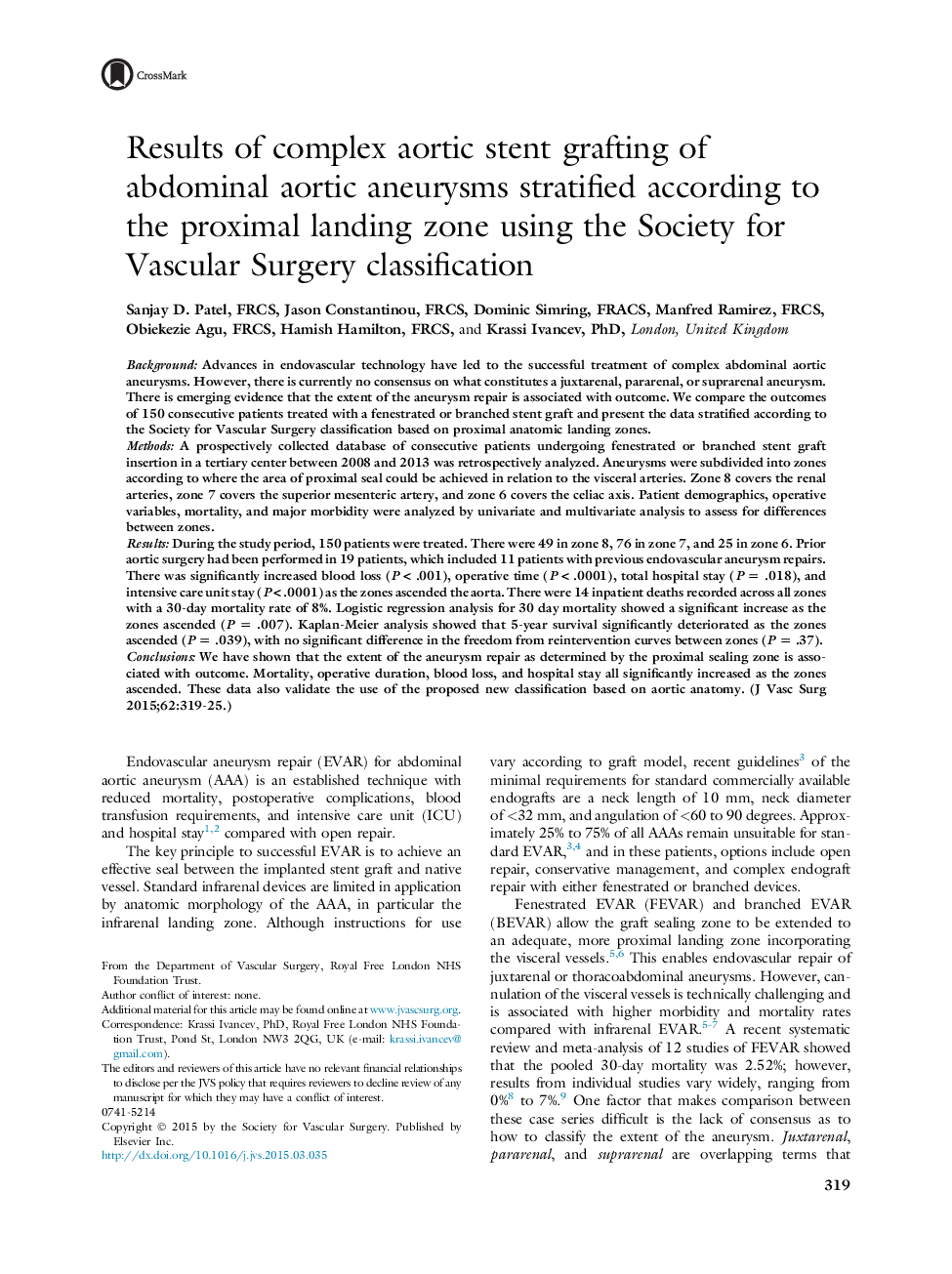| Article ID | Journal | Published Year | Pages | File Type |
|---|---|---|---|---|
| 5993756 | Journal of Vascular Surgery | 2015 | 9 Pages |
BackgroundAdvances in endovascular technology have led to the successful treatment of complex abdominal aortic aneurysms. However, there is currently no consensus on what constitutes a juxtarenal, pararenal, or suprarenal aneurysm. There is emerging evidence that the extent of the aneurysm repair is associated with outcome. We compare the outcomes of 150 consecutive patients treated with a fenestrated or branched stent graft and present the data stratified according to the Society for Vascular Surgery classification based on proximal anatomic landing zones.MethodsA prospectively collected database of consecutive patients undergoing fenestrated or branched stent graft insertion in a tertiary center between 2008 and 2013 was retrospectively analyzed. Aneurysms were subdivided into zones according to where the area of proximal seal could be achieved in relation to the visceral arteries. Zone 8 covers the renal arteries, zone 7 covers the superior mesenteric artery, and zone 6 covers the celiac axis. Patient demographics, operative variables, mortality, and major morbidity were analyzed by univariate and multivariate analysis to assess for differences between zones.ResultsDuring the study period, 150 patients were treated. There were 49 in zone 8, 76 in zone 7, and 25 in zone 6. Prior aortic surgery had been performed in 19 patients, which included 11 patients with previous endovascular aneurysm repairs. There was significantly increased blood loss (PÂ < .001), operative time (PÂ < .0001), total hospital stay (PÂ = .018), and intensive care unit stay (PÂ < .0001) as the zones ascended the aorta. There were 14 inpatient deaths recorded across all zones with a 30-day mortality rate of 8%. Logistic regression analysis for 30 day mortality showed a significant increase as the zones ascended (PÂ = .007). Kaplan-Meier analysis showed that 5-year survival significantly deteriorated as the zones ascended (PÂ = .039), with no significant difference in the freedom from reintervention curves between zones (PÂ = .37).ConclusionsWe have shown that the extent of the aneurysm repair as determined by the proximal sealing zone is associated with outcome. Mortality, operative duration, blood loss, and hospital stay all significantly increased as the zones ascended. These data also validate the use of the proposed new classification based on aortic anatomy.
